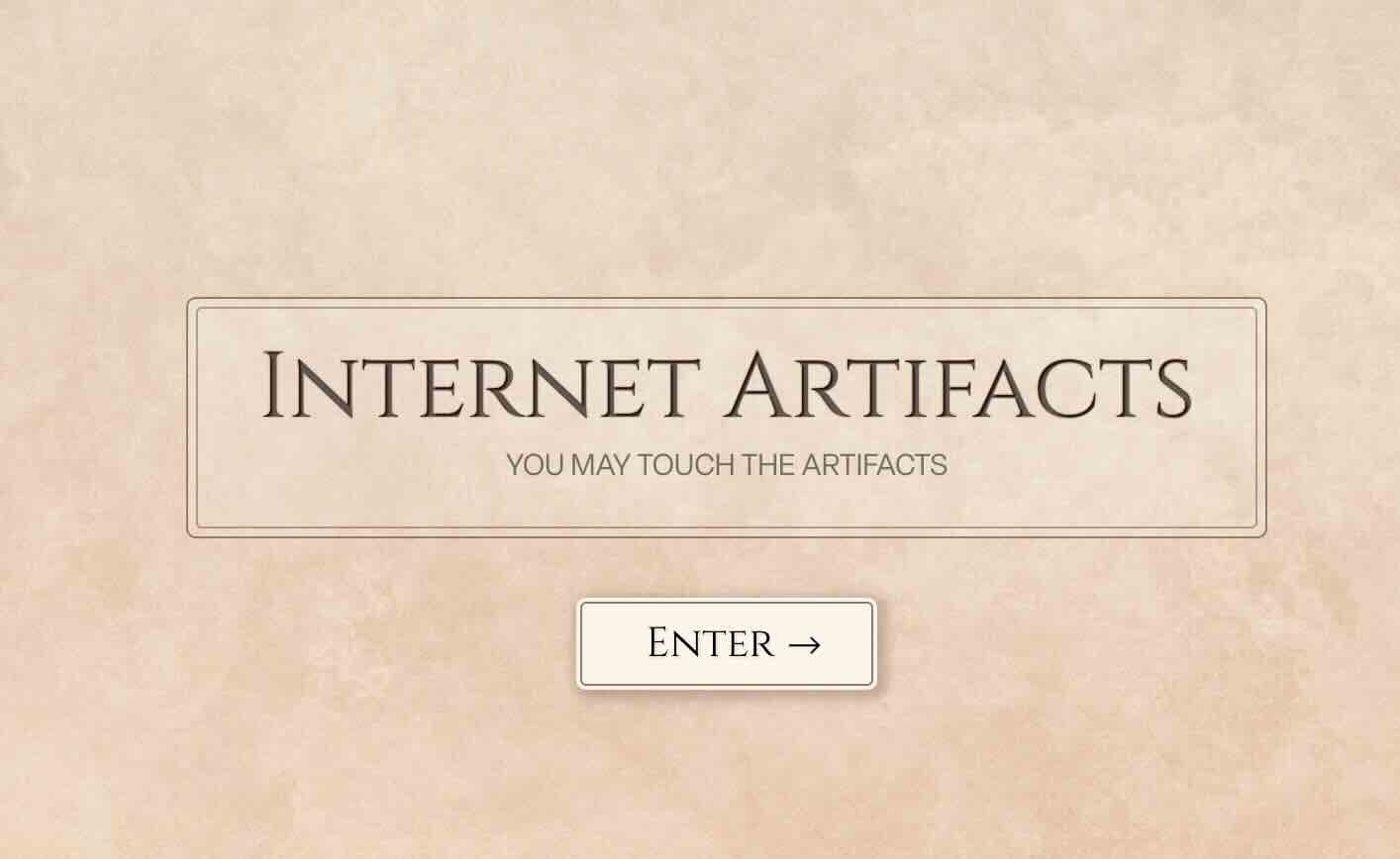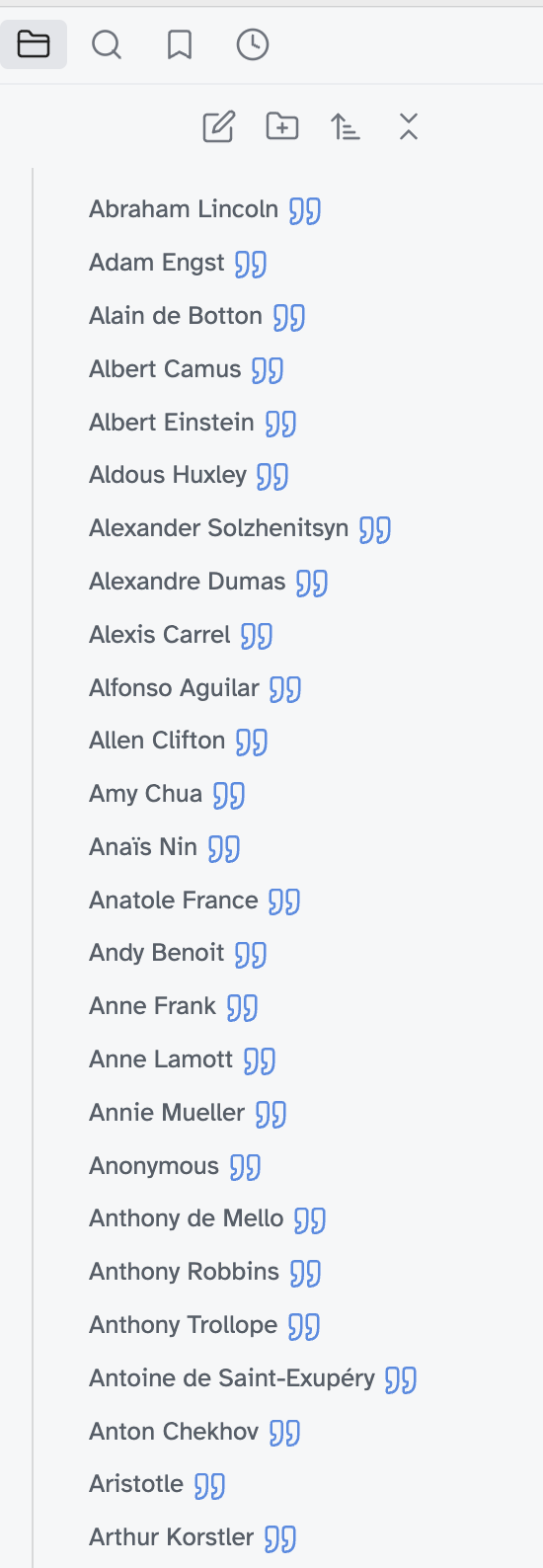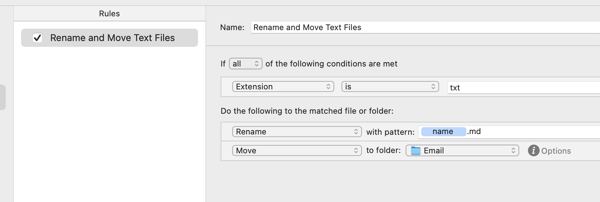Apps
Obsidian Tip of the Day: Three Templater Snippets for All Your Note Templates in #Obsidian
If you use the Templater community plugin (and you really should) you have three snippets available to you which provide a real asset in creating metadata in your note templates. These dynamic entries allow you to automatically add the creation date, modification date and note name to your new notes. Never again will you have to bear the indignity of a note that decides to call itself Untitled. To add these to your templates, edit them with source mode turned on instead of live preview which is the Obsidian default.
Note Name
This snippet gives you a pop-up when you first create your notes asking you to name it then. You type the name into the resulting dialog box and that’s that taken care of. (Note: This snippet goes at the very top of your note at Line 1. It creates the three tick marks that are the beginning of the code block for your properties.)
<%*
let title = tp.file.title
if (title.startsWith("Untitled")) {
title = await tp.system.prompt("Title");
await tp.file.rename(title);
}
tR += "---"
%>
Creation Date
This snippet will provide you with the creation date of your new note instead of the creation date of the template itself which is sometimes a problem when using dates in templates. If you use a different date format, replace the format here within the quotation marks.
<% tp.date.now("YYYY-MM-DD") %>
Modification Date
This snippet will provide you with a properties field that will update itself whenever you edit a note. As above, if you use a different date format, replace the format here within the quotation marks.
<% tp.file.last_modified_date("YYYY-MM-DD") %>
See all my Obsidian Tips
I posted a shortcut on Routine Hub for capturing entire web pages in #Obsidian, including image links and a link back to the source article. You can create a new note or append to an existing one. Routine Hub | Download Web Pages to Obsidian
Worked with Google Gemini today on a python script for an hour that never worked. Meanwhile an anonymous human being on the #Obsidian forum solved my problem with a five-line dataview query.
Automating Your #Obsidian Backup, Let Me Save You Some Hassle
The current sale underway at Bundlehunt offers over 40 Mac apps for under $5.00 apiece. There are some definite bargains but two I want to point out are Alarm Clock Pro and Lingon X. Both of these utilities offer a feature that comes in handy when setting up an automated backup solution for Obsidian. They can both launch applications according to a set schedule. If you are a Keyboard Maestro user, that can do it too, with the added benefit of also being able to close applications for you.


Sync Folders Pro
Keyboard Maestro launches an $8.99 app I got from from the Mac App Store to run an automated backup of my Obsidian vault every morning at 2:00AM. Sync Folders Pro It perfroms a one-way sync to a folder on my Google Drive, which in turn backs up the files to the cloud, giving me an offsite back up in case of theft or natural disaster. I’m planning to start using Dropbox instead of Google Drive because it offers file versioning. If you are a PC user, you can get Free File Sync which doesn’t offer a scheduler but is easy to set up and you just have to remember to run it manually on a regular schedule.

Obsidian Git
I also use the Obsidian Git community plugin. If you are a Mac user, save your self some hassle and install Git and Git Credential Manager via the terminal and Homebrew before setting up your backup. Failing to do so may result in annoying permissions errors when attempting to back up.
Install homebrew if you don’t already have it and then run the following command from terminal:
$ brew install git
To install Credential Manager use:
>```
brew install --cask git-credential-manager
Then use Github Desktop for Mac to create a private Git repository based on your Obsidian vault. You’ll need a free Git account to do this. Once you’ve got your repository set up and your initial upload done,install the plugin and you’ll have an automated real time back up of your files - with versioning. Danny Hatcher has a video to help you understand the procedure.
Time Machine

Of course, it’s a best practice to back uo your entire Mac regularly. Thankfully the bulit-in Mac backup utility, Time Machine makes it as easy as plugging in an external hard drive. I use a Sandisk 1TB portable SSD to back up my Macbook every night. See this Apple document for detailed instructions on Time Machine.
See all my Obsidian Tips
What I Found on the Web This Week
This week’s bookmark collection includes a magnificent time suck at the Internet Archive, thanks to Jarrod Blundy from HeyDingus.net.. Also included are the YouTube channel of the week, the blog of the week as well as a helpful tool for skirting paywalls, a great article on the Fediverse, new AI tools and more.

Internet Artifacts
Summary: It’s an online museum with exhibits. Want to see the first SPAM email ever sent? It’s here. Want to see a diagram of the Internet when it was only 111 computers big? It’s here too. This site is extremely well done and prepared to cost you some curious time if you get sucked into it.

Hugging Face Assistants- Open AI offers custom GPTs to it’s $20 a month customers, but Hugging Face does the same for free. You can choose from a variety of fine-tunes helpers to accomplish anything from web design to cooking.

Archive.is
Summary: Archive.is is the ultimate tool for viewing paywalled material. I don’t even try to open Medium links anymore without pasting them into Archive.is. If you want to read something from the New York Times, Washington Post or Wall Street Journal, chances are you can find it already archived here. There’s even a browser extension to make it easier for you. You’ll thank me later for this one.

cyclelou/Amerpie: Downloadable Markdown files for Obsidian (github.com) - This is my personal quotes collection, broken down in separate markdown files suitable for importing into Obsidian

The fediverse, explained
Summary: The always excellent Davis Pierce interviews himself about our corner of the web. “The buzziest new thing in social networking is a big deal. It’s also very confusing. And it’s not actually new. Let’s talk about it.”

Marco Serafini - YouTube
Summary: Marco is this charming Italian guy who makes videos about Obsidian, note taking and PKM in general. I learned how to use some use plugins from his concise explanations of them.

Tracy Durnell
Summary - Tracy is a blogger and consultant in Seattle who does a great job on her personal blog. She wrote a series of posts on blogging around the first of the year I found personally very helpful:
What little extras do you #Obsidian people add to your daily note? I have Templater snippets for a daily quote and to link to yesterday and tomorrow’s notes. I also have a dataview snippet for all the notes created that day and finally a plugin for Things 3 which lists all my completed tasks.
I live the cross-platform life, Windows by day. #MacOS at night. I need clipboard syncing with iOS on both. There are many Mac choices. I use PastePal. On the PC side, I use Clipboard Fusion and it just got its first update in five years! I hate it when much loved apps die on the vine.
If you’re looking for a way to save web pages to #Obsidian on mobile, check out this shortcut to save markdown to #Drafts routinehub.co/shortcut/…
I’ve been collecting quotes for years. Getting into #Obsidian has given me a new way to catalog them. Anyone out there want to trade ZIP files full of Markdown formatted quotes suitable for importing into an Obsidian vault?

Three Plugins to Simplify Your Metadata Management in Obsidian
Introduction
In the world of markdown note-taking, maintaining tidy metadata in Obsidian is crucial for advanced functionality. Whether you rely on the Dataview plugin or embedded queries, properties play a vital role. Beyond functionality, having easy access to note information like creation dates and source URLs enhances your note-taking experience. Luckily, there are three powerful plugins that can streamline your metadata management in Obsidian: Linter, Metadata Menu and Multi Properties.
Linter Plugin—Streamline Your Defaults
Among the trio, Linter stands out as the most robust plugin. With enough customization, it can accomplish what the other two plugins offer. However, I prefer using Linter for general defaults while using the other plugins for specific cases. Linter excels at applying a default set of properties to all your notes, and I use the following essential properties:
>```
title:
url:
tags:
creation date:
modification date:
```
Furthermore, Linter offers the flexibility of adding additional properties, which it conveniently lists in alphabetical order. You can also choose the date format, with the recommended format being YYYY-MM-DD. Another impressive feature of Linter is its ability to move tags from the note body to the metadata section. Additionally, if you have older notes without properties, Linter excels in formatting existing YAML headers according to the new standards.
Metadata Menu—Customize Note Properties
For applying a specific set of properties to select notes, Metadata Menu is an excellent choice. Whether you want to group notes within a folder or classify them by a common tag, this plugin offers remarkable flexibility. While the Templater plugin can achieve similar functionality, Metadata Menu eliminates the need to learn special syntax. It’s worth noting that Templater can be less reliable on Mac systems. To learn more about how to leverage Metadata Menu effectively, check out Marco Serafini’s YouTube video.
Multi Properties—Quick and Easy
If you need a quick and effortless method to add properties on the go, the Multi Properties plugin is your go-to solution. Simply select a group of notes, right-click, and Multi Properties allows you to apply as many properties as desired. This feature allows you to assign specific tags or add property fields for note-specific data that you plan to fill in later.
Conclusion
By leveraging these three powerful plugins, you can automate a significant portion of your metadata management in Obsidian. This foundation will not only make your note-taking more effective, it will also allow you to harness Dataview and inline queries to amp up the effectiveness of your PKM system.
See all my Obsidian Tips
OMG - my Open.AI account finally refunded, meaning I spent $5 since November 29 - with almost daily use of some sort.

How to Send an Email to Your Obsidian Vault
If you are a Mac user who doesn’t mind hacking together a few common services and applications, you can configure a way to use your email client, even on Windows or from iOS or Android, to get emails into your Obsidian vault.
What You’ll Need
Besides an email client and a working copy of Obsidian, you’ll need the following:
- An account at IFTTT.com
- An account at Dropbox
- A copy of Hazel by Noodlesoft Software
IFTTT

Start by enabling Email Integrations - Connect Your Apps with IFTTT. This will give you an email address to which you can forward emails to trigger this sequence of events. The specific applet you’ll need can be access here.
Dropbox
You can use any folder in your Dropbox account, just make sure it’s one where you’ve set up selective sync so the file actually ends up on your hard drive and not in the shadowy netherworld where Apple currently likes to relegate files from cloud services. I like to use a free Dropbox client from Maestral that actually lets me keep my files in the root of my home directory instead in the cloud services folder in the ~/library.
Hazel
If you aren’t familiar with Hazel by Noodlesoft, it is is a utility software for macOS that automates file organization and management tasks based on user-defined rules. It can perform actions like moving, renaming, deleting files, running scripts, and more, based on various criteria such as name, type, date, or content.

The rule you’ll make will rename the text file you created by emailing the IFTTT address. It will give the file a “.md” extension so that Obsidian will recognize it. Then it will move the renamed file into a folder you choose within your Obsidian vault. Mine is originally named “Email”. This works best if you a Mac that’s always on, but if you don’t, Hazel will run the rule as soon as you log in to you device.
Another Method
Quick and Dirty Prototyp- Receive Mail for Obsidian - dit und dat
See all my Obsidian Tips
Phanpy - A Web-Based Mastodon Client with Features You Have to Pay for Elsewhere - Check it out!

Summary - A web-based Mastodon client with some useful features; 1) Visually separate original posts and re-shared posts (boosted posts), 2) Nested comments thread - Effortlessly follow conversations. Semi-collapsible replies. 3)Similar notifications are grouped and collapsed to reduce clutter. 4) By default, single column for zen-mode seekers. Configurable multi-column for power users. 5)Up to 5 hashtags combined into a single timeline.
App of the Day: Due, a Hybrid Reminders and Alarm Clock App
Due is a hybrid of a reminders app and an alarm clock. You can set one time or persistent reminders for things like moving the trash to the curb, clocking in or out at work, changing the filter in your Britta, the time you need to make a phone call or visit someone’s office. You can’t ignore Due. It’s alarms repeat every minute on the minute until you turn them off, up to five times by default and configurable up to ten times. It also has reusable precise countdown timers for things you repeat constantly like brewing tea. It has natural language input capabilities. It’s a snap to set up a reminder on the fly. It cost $7.99 for all the features it has right now and has an IAP to insure your rights to upgrades. There is even a Mac app that syncs via iCloud. I’ve had Due on my homescreen since iOS 4. You should add it to yours.

Something big is being announced by the Browser Company today #Arc = just got an email full of promises:
- Our belief in a new category of software
- 4 new features that hint at the next chapter for Arc
- And what we mean by a browser that browses for you
# Two Helpful Dataview Snippets for Obsidian
I like to have a note in my vault that shows all the notes created on the current day. I’ve been using a query that I have to update each day with the new date but I recently got a great tip from the Obsidian forum. Now I have a dynamically updated note that resets each day at midnight. You can use the dataview query below to achieve the same thing. (Note - You must have the dataview community plugin installed)
```dataview
LIST WHERE contains(creation-date, date(today))
SORT file.name DESC
```
To further this idea, I decided I’d like to have a section of my daily note listing all the files created on that particular day. Obviously, i can’t use a dynamic variable for this or the data would change depending on what date I opened the note. Returning once again to the Obsidian forum, I got the solution to this problem as well. I use the following dataview query under a level two heading of “Notes Created Today”
```dataview
LIST WHERE creation-date = this.creation-date
```
See all my Obsidian Tips
I knew this day was coming. I’ve been using #Evernote for 16 years. It’s integration with IFTTT, the web clipper and the mail to Evernote feature are all valuable parts of my workflow. I’m trying to rely on #Obsidian these days but I think I’ll bite the bullet and pay for one more year.

The geek in me is celebrating the conversion of a 236-line CSV file to markdown files this morning. Now the quote collection I’ve been piecing together for years is in #Obsidian instead of an iOS app that’s been deprecated since 2016. It’s the little things.
So, IFTTT just raised prices by 33% and you know what, I’m just going to pay it and keep going. I get so much value out of the automations I have set up. I need them to make my emails to #Obsidian work. Another plus, their tech support stays with problems until they are resolved.
The new [Arc Search](https://apps.apple.com/app/id6472513080) app for iOS
The new Arc Search app for iOS is better than just a chatbot on top of a search engine. It builds you a web page (with sources) to answer your search queries. The info it provides is up-to-date and easier to access than scanning a list of possible related links.